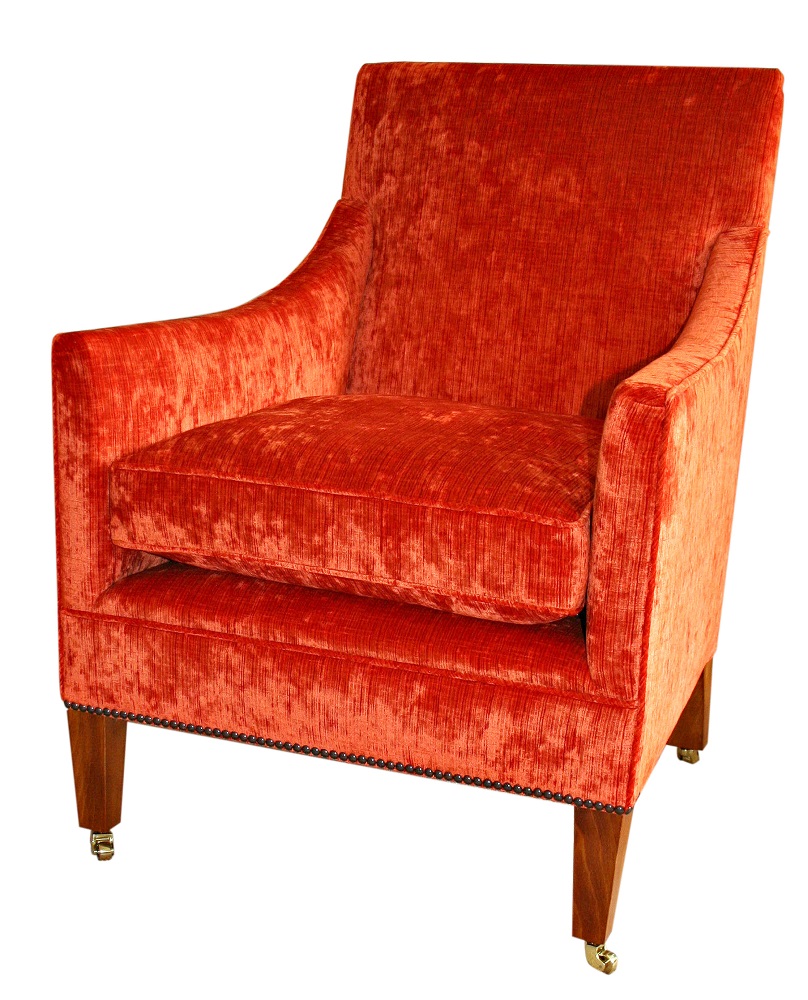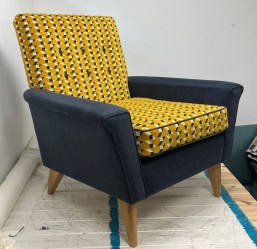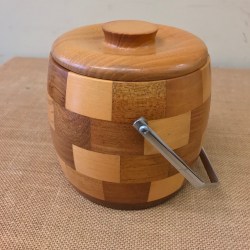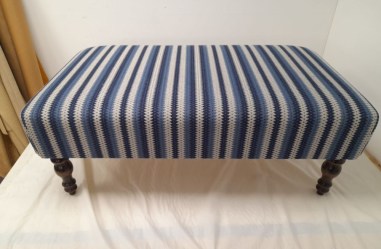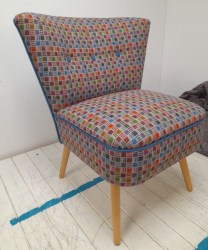When local artist purchased a pair of chairs from us, he asked if we had a chair which we could upholster using the fabric he had designed. When he showed me a photograph of the fabric, an Arts & Crafts chair which we'd had for years, instantly sprung to mind.
We'd had this Art & Crafts chair for years and Mark and I could never agree what fabric to put on it. We didn't want to go down the traditional route, possibly William Morris fabric, so the chair sat in the workshop gathering dust and cob webs. The customer visited our workshop and brought a sample of the fabric for Mark to look at. We all agreed this would look amazing. Mark knew it wouldn't be an easy fabric to work with due to the way it was designed. It was done by computer and was too complex for us to understand how it was designed, so here are a few paragraphs from the artist on how its done.
This the pattern is mainly inspired by the cool funky patterns of the 70s, but it's put together like Islamic tile design. Islamic tiles (which are beautiful) often have mathematical geometric designs on them, that form complex patterns across the floor or wall as you combine the tiles in different ways. There are often rules about how you place the tiles, rotating them, alternating them and so on. As you put the tiles together and follow the rules shapes and patterns emerge.
So, with that in mind. The "tiles" on the fabric, are made of either a set of curves, or straight lines. The "tiles" can then be arranged randomly next to each other, and it'll form a pattern that our eye enjoys following, they all seem to link up in an almost human design way. Because they are tiles, and will always connect to each other, a group of tiles can be repeated like, well, a fabric pattern.
The computer is given a selection of colour palettes to work with, and then after that an infinite number of patterns can be generated. Meaning that each run of fabric is unique, and therefor each furnishing (or set) is a one-off, while sitting within a theme/style.



